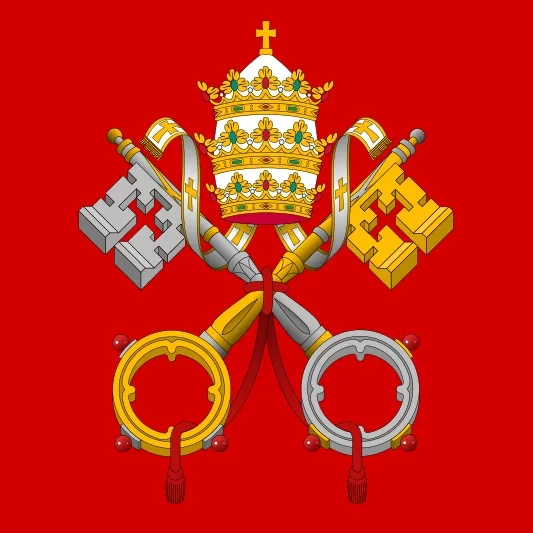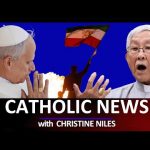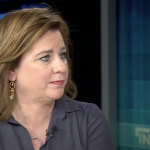As the first month of the Vatican’s synod on synodality moves closer to an end, participants will soon begin working to prepare a document synthesizing their discussion, which will eventually help form the basis for the recommendation the synod makes to the pope at the end of another month-long gathering, to be held next year.
Participants will review an outline for the text, propose amendments, debate its content, and eventually vote, by secret ballot, on whether to approve the whole of their “Synthesis Document.”
But while the Vatican’s meeting is formally a “synod of bishops,” the approval process will not tally which votes came from bishops, and which came from priests, religious, and other lay participants.
The Vatican says that process doesn’t undermine the nature of the meeting itself. But some observers are raising questions about why laity will have an equal vote in the deliberations of an explicitly episcopal gathering, and some are making comparisons to rejected structural proposals of the German “synodal way.”
—
By design, a synod of bishops is a meeting whose membership is drawn from the Church’s episcopate around the world, held periodically in Rome “to foster closer unity between the Roman Pontiff and bishops, to assist the Roman Pontiff with their counsel in the preservation and growth of faith and morals and in the observance and strengthening of ecclesiastical discipline, and to consider questions pertaining to the activity of the Church in the world,” according to the Code of Canon Law.
The synod is not, like an ecumenical council, a formal and deliberative part of the Latin Church’s hierarchical structure and theological self-understanding.
Nor is it a deliberative governing body, akin to the synods of bishops that govern Eastern Catholic and Orthodox churches.
But when Pope St. Paul VI set rules for the synods after the Second Vatican Council, he taught that synods were meant to be “central ecclesiastical institutions,” and “representing the whole Catholic episcopate.”
Of course, being a matter of prudent judgment, such institutions are malleable, and popes are free to amend their constitutions as they see fit. While non-bishops, mostly high-ranking priests, have participated before, Pope Francis has greatly expanded the composition of synodal assemblies, to include lay and religious representatives with the same voting powers as bishops.
Those representatives will be among those voting at the conclusion of this October’s meeting, and if the bishops gathered are mostly split over approving documents, lay votes could hold significant sway.
That is not an unprecedented phenomenon in the Church’s structure.
Church law allows for diocesan synods, which make recommendations to a diocesan bishop about his local Church, to be composed of both clerics and laity, with no prohibition on a majority of lay members.
And even in deliberative bodies — like the diocesan finance council or the collegiate panels of judges which consider marriage cases — it is acceptable in Church law for even a majority of the members to be lay.
But critics say it contravenes the very nature of the thing itself to see lay members constituted as part of an essentially episcopal body. That it would be no less strange if lay people became voting members of a diocesan presbyteral council, or an episcopal conference. Whatever this meeting is, they say, the voting rights of lay people challenge the notion that this meeting is a “synod of bishops,” at all.
In fact, some participants agree, and some have suggested that the meeting might better be called, ambitiously, the “Assembly of the People of God.”
Some critics note that the Vatican pushed back strenuously against the initial plans for the German “synodal way” — a series of meetings held in recent years that were first conceived as a kind of deliberative, policy-making body for the German Church. Eventually, when the Vatican said that idea was “not ecclesiologically valid,” the “synodal way” was reshaped as a consultative meeting, meant to give recommendations, not set policy.
But even at that point, in the face of Vatican pushback, the voting was given a kind of two-tiered structure — while the entire assembly of laity, priests, religious, and bishops could approve resolutions, the same resolutions would need a two-thirds majority of bishop voters to be given final passage.
Critics of the synod on synodality say that what was true of the German synod should be true of the Vatican’s meeting as well, at least in some form.
But the Vatican has taken a different tack.
Vatican communications prefect Paolo Ruffini told reporters Thursday that the assembly is a “synod of bishops,” at which a minority of participants — a little less than 25% percent — are non-bishops.
“It remains that this is the synod of bishops,” Ruffini said. But the “synod of bishops has a representation of non-bishops. They are not unbelievers … we are all baptized. We are all united by the same baptismal priesthood.”
“We are all believers, and we offer our contribution, as happens in every parish … In every ecclesial reality, the bishops walk with the people and the people walk with the bishops.”
At the same Thursday press conference, Ruffini urged prudence on the meaning of the interim document this October’s meeting will produce.
The text, he said, will not be the final document of synodal recommendations, he said.
“It will be a document that we will all see, and when you see it, you can judge it as you like — you may like it or dislike it, and we will all carry out our own discernment, and we are free to think of it as we think of it,” Ruffini insisted.
But some critics say that a cadre of participants have raised expectations for the synod, suggesting it will represent some definitive “sensus fidei” — a practically inspired expression of the Church’s common discernment.
Even while organizers and most participants try to tamp down that rhetoric, it exists, with some synod organizers saying this synod is the most important Church event since Vatican II. In that context, they say, the October document will be framed in many corners as an expression of the Church’s identity — which is why, they say, it matters whether bishops, ordained with a charism for teaching, are the ones who have produced it.
It remains to be seen how the document will be received in the Church.
But as synod organizers say that October’s meeting is meant to give the Church “practice” at the work of synodality — common prayerful discernment — they might soon hear that for a lot of Catholics, it matters who exactly is doing the listening, and ho exactly is doing the discernment, and who exactly is getting a vote.











